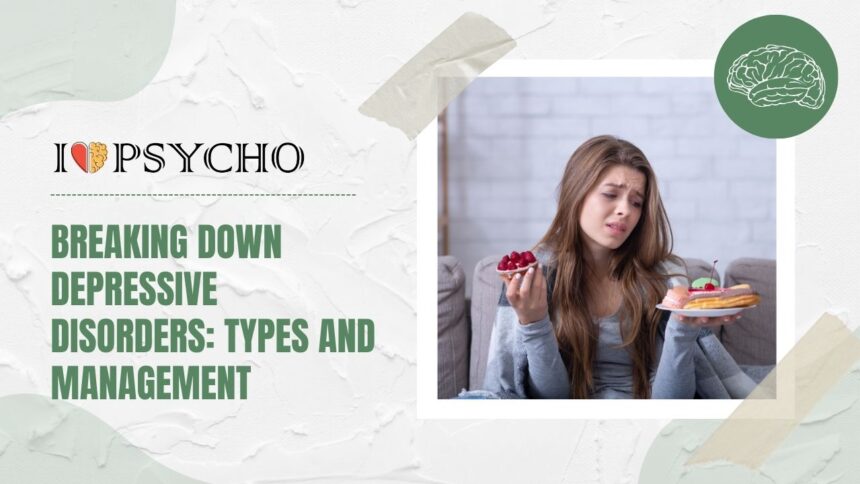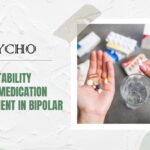Welcome to our deep dive into the world of depressive disorders. In this blog post, we will explore the different types of depressive disorders, their causes and risk factors, diagnosis methods, treatment options, medications available, therapy techniques, lifestyle changes that can help manage symptoms effectively, support systems to lean on during tough times, and self-care tips for those navigating through these challenges. Let’s break down the stigma surrounding depressive disorders together and shed light on how they can be managed with understanding and compassion.
Understanding Depressive Disorders
Depressive disorders are complex mental health conditions that can impact individuals in various ways. While feeling sad or down occasionally is a normal part of life, depressive disorders involve persistent feelings of sadness, hopelessness, and worthlessness that can interfere with daily functioning.
These disorders go beyond just feeling blue; they can affect how you think, feel, and handle daily activities. Understanding the different types of depressive disorders is crucial for recognizing symptoms and seeking appropriate help when needed.
Depressive disorders can manifest differently from person to person, ranging from mild to severe symptoms. It’s important to remember that these conditions are not a sign of weakness but rather a medical condition that requires attention and care.
By learning more about depressive disorders and increasing awareness around them, we can better support those who may be struggling silently with their mental health challenges.
Common Types of Depressive Disorders
Depressive disorders come in various forms, each with its own unique characteristics and symptoms. Major depressive disorder is perhaps the most well-known type, characterized by persistent feelings of sadness or loss of interest in activities once enjoyed. Dysthymia, on the other hand, involves long-term but less severe symptoms that can still impact daily life significantly.
Seasonal affective disorder typically occurs during specific times of the year when natural light is limited, leading to feelings of lethargy and low mood. Bipolar disorder combines periods of depression with episodes of mania or hypomania, creating a rollercoaster effect on emotions.
Postpartum depression affects new mothers after childbirth due to hormonal changes and increased stress levels. Psychotic depression involves severe depressive symptoms alongside psychosis features such as hallucinations or delusions.
Understanding these different types is crucial for accurate diagnosis and effective treatment planning.
1. Major Depressive Disorder (MDD)
Major depressive disorder, also known as clinical depression, is one of the most common types of depressive disorders. It is characterized by persistent feelings of sadness, hopelessness, and loss of interest in activities that were once enjoyable.
Symptoms may include changes in appetite and sleep patterns, low energy levels, difficulty concentrating, feelings of guilt or worthlessness, and even thoughts of death or suicide.
MDD can be triggered by a variety of factors, including genetics, environmental stressors, and chemical imbalances in the brain. Treatment for MDD typically involves a combination of medication and therapy.
2. Dysthymia
Dysthymia is a chronic form of depression that lasts for at least two years. While its symptoms are similar to those of major depressive disorder, they tend to be less severe but longer-lasting.
People with dysthymia may experience fluctuations in their mood but generally have a consistently low mood that impacts their daily life. They may also have periods where they feel relatively well.
Treatment for dysthymia may involve therapy, lifestyle changes, and medication.
3. Seasonal Affective Disorder (SAD)
Seasonal affective disorder (SAD) is a type of depression that occurs during specific times of the year, typically in the fall and winter when there is less natural light. It is believed to be caused by a disruption in the body’s circadian rhythm, which regulates sleep-wake cycles and mood.
Symptoms of SAD include low energy levels, changes in appetite and sleep patterns, difficulty concentrating, and feelings of hopelessness. Treatment may involve light therapy, medication, or psychotherapy.
4. Bipolar Disorder
Bipolar disorder is a mood disorder characterized by alternating episodes of depression and mania or hypomania. During manic episodes, individuals may experience an elevated mood, increased energy, impulsivity, and risky behavior. Hypomanic episodes are milder versions of mania.
Bipolar disorder can be challenging to diagnose as it can often be mistaken for other mental health conditions due to its varying symptoms. Treatment typically involves a combination of medication and therapy.
5. Postpartum Depression
Postpartum depression (PPD) is a type of depressive disorder that affects new mothers after childbirth. It is estimated that around 15% of women experience PPD after giving birth.
Causes and Risk Factors
Understanding what causes depressive disorders can help individuals navigate their mental health journey. While the exact cause is not always clear, a combination of genetic, biological, environmental, and psychological factors may play a role in the development of depression.
Genetics may predispose some individuals to depressive disorders, as certain genes can make people more susceptible to developing depression. Additionally, imbalances in brain chemicals like serotonin and dopamine can contribute to mood disturbances.
Environmental factors such as trauma, abuse, or significant life changes can also trigger depressive episodes. Chronic stress or social isolation may further exacerbate symptoms of depression.
Personal vulnerabilities like low self-esteem or perfectionistic tendencies could increase the risk of developing depressive disorders. It’s essential to recognize these potential triggers and seek appropriate support when needed.
Diagnosis and Treatment Options
Diagnosing depressive disorders can be complex as symptoms vary from person to person. A healthcare provider may conduct a thorough evaluation, including a physical exam and mental health assessment. It’s essential to communicate openly about your feelings and experiences during this process.
Treatment options for depressive disorders often involve a combination of medication, therapy, and lifestyle changes. Antidepressants can help regulate brain chemicals linked to mood, while therapy sessions provide support and coping strategies. Cognitive-behavioral therapy (CBT) is particularly effective in challenging negative thought patterns.
In addition to traditional treatment methods, incorporating healthy habits like regular exercise, proper nutrition, and sufficient sleep can have a positive impact on mental well-being. Building a strong support system with friends, family members, or support groups can also play a vital role in recovery.
Remember that finding the right diagnosis and treatment plan may take time but staying committed to your mental health journey is crucial for overall well-being.
Medications for Depressive Disorders
When it comes to treating depressive disorders, medications can be a crucial component of the treatment plan. Antidepressants are commonly prescribed to help regulate neurotransmitters in the brain and alleviate symptoms of depression. It’s important to work closely with a healthcare provider to find the right medication and dosage that works best for each individual.
There are different classes of antidepressants available, such as selective serotonin reuptake inhibitors (SSRIs), serotonin-norepinephrine reuptake inhibitors (SNRIs), tricyclic antidepressants, and others. Each class works differently in the brain and may have varying side effects.
It’s essential for individuals taking antidepressants to follow their healthcare provider’s instructions carefully and communicate any concerns or side effects experienced during treatment. Finding the right medication can take time and may require adjustments along the way.
In some cases, a combination of medication and therapy may be most effective in managing depressive disorders. It’s important not to rely solely on medications but also incorporate other therapeutic approaches into one’s treatment plan for holistic care.
Therapy and Lifestyle Changes
Therapy and lifestyle changes play a crucial role in managing depressive disorders. Therapy, such as cognitive-behavioral therapy or interpersonal therapy, can help individuals identify and change negative thought patterns. It provides coping strategies to deal with stressors effectively.
Additionally, incorporating positive lifestyle changes like regular exercise, adequate sleep, and a balanced diet can significantly impact mental well-being. Physical activity releases endorphins that act as natural mood lifters while proper nutrition nourishes the body and mind.
Engaging in activities you enjoy, practicing mindfulness or meditation, and maintaining social connections are also beneficial for improving mood and reducing symptoms of depression.
Remember, everyone’s journey towards healing is unique; finding what works best for you may take time but is worth it in the long run. Embrace the process of self-discovery and growth as you navigate through therapy sessions and adjust your lifestyle to prioritize your mental health needs.
Support Systems and Self-Care Tips
Navigating through depressive disorders can be overwhelming, but having a strong support system in place can make all the difference. Surrounding yourself with understanding and caring individuals who offer a listening ear or a comforting presence can provide comfort during challenging times.
Self-care plays an essential role in managing depressive disorders. Taking time for activities that bring you joy and relaxation is crucial for your mental well-being. This could include engaging in hobbies, practicing mindfulness techniques, or simply taking a walk outdoors to clear your mind.
Establishing routines and setting realistic goals can help create structure and stability in your daily life. Prioritizing self-care by getting enough rest, eating nutritious meals, and staying physically active are key components of maintaining overall health while coping with depression.
Remember to be kind to yourself on this journey towards healing. Seeking professional help when needed is not a sign of weakness but rather a courageous step towards better mental health. Your well-being matters, so prioritize it accordingly.
Breaking the Stigma Surrounding Depressive Disorders
It’s time to address the elephant in the room – the stigma surrounding depressive disorders. Society often attaches a negative connotation to mental health issues, viewing them as weaknesses rather than medical conditions. This misconception leads to discrimination and misunderstanding towards those battling with depression.
Breaking the stigma starts with education and awareness. By understanding that depressive disorders are legitimate illnesses that require treatment and support, we can shift our perspectives towards empathy and compassion. It’s crucial to recognize that seeking help for mental health concerns is a sign of strength, not weakness.
Open conversations about depression can normalize the discussion around it, encouraging individuals to seek help without fear of judgment or shame. Let’s create a safe space where people feel comfortable sharing their struggles without facing prejudice or discrimination.
Conclusion
Depressive disorders are common yet complex conditions that can significantly impact one’s quality of life. It is crucial to understand the different types of depressive disorders, their causes, and available treatment options. By seeking help from healthcare professionals, utilizing medications, therapy, making lifestyle changes, and building support systems, individuals with depressive disorders can effectively manage their symptoms and improve their overall well-being.
Breaking the stigma surrounding mental health issues like depressive disorders is essential in creating a more supportive and understanding society. By promoting open conversations, providing education on mental health topics, and showing empathy towards those struggling with these conditions, we can work together to reduce stigma and encourage more people to seek help when needed.
Remember that it is okay not to be okay sometimes. Seeking help is a sign of strength rather than weakness. With the right support and resources in place, individuals living with depressive disorders can lead fulfilling lives and regain a sense of hope for the future. Let’s continue to spread awareness and support each other on our mental health journeys.









